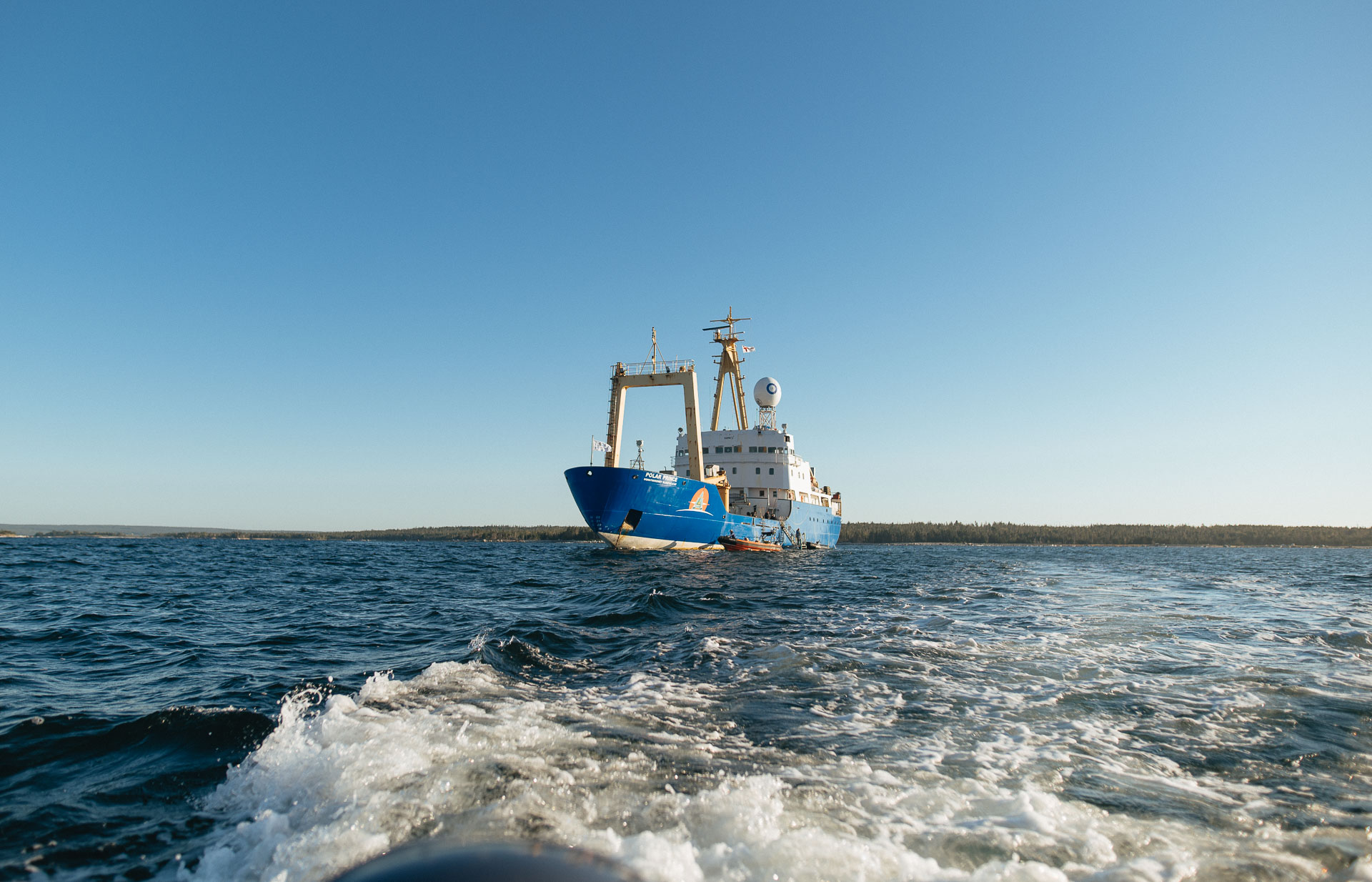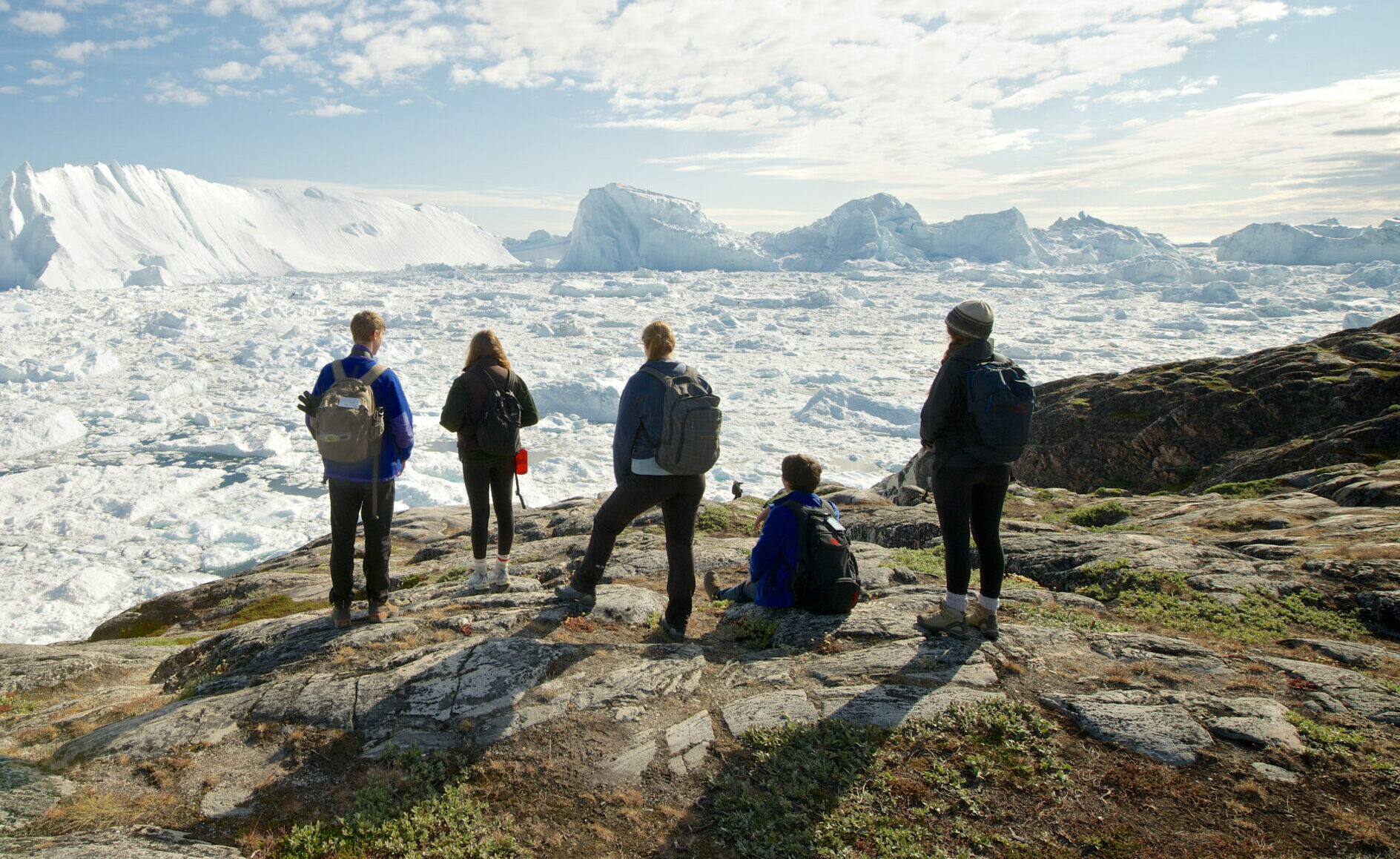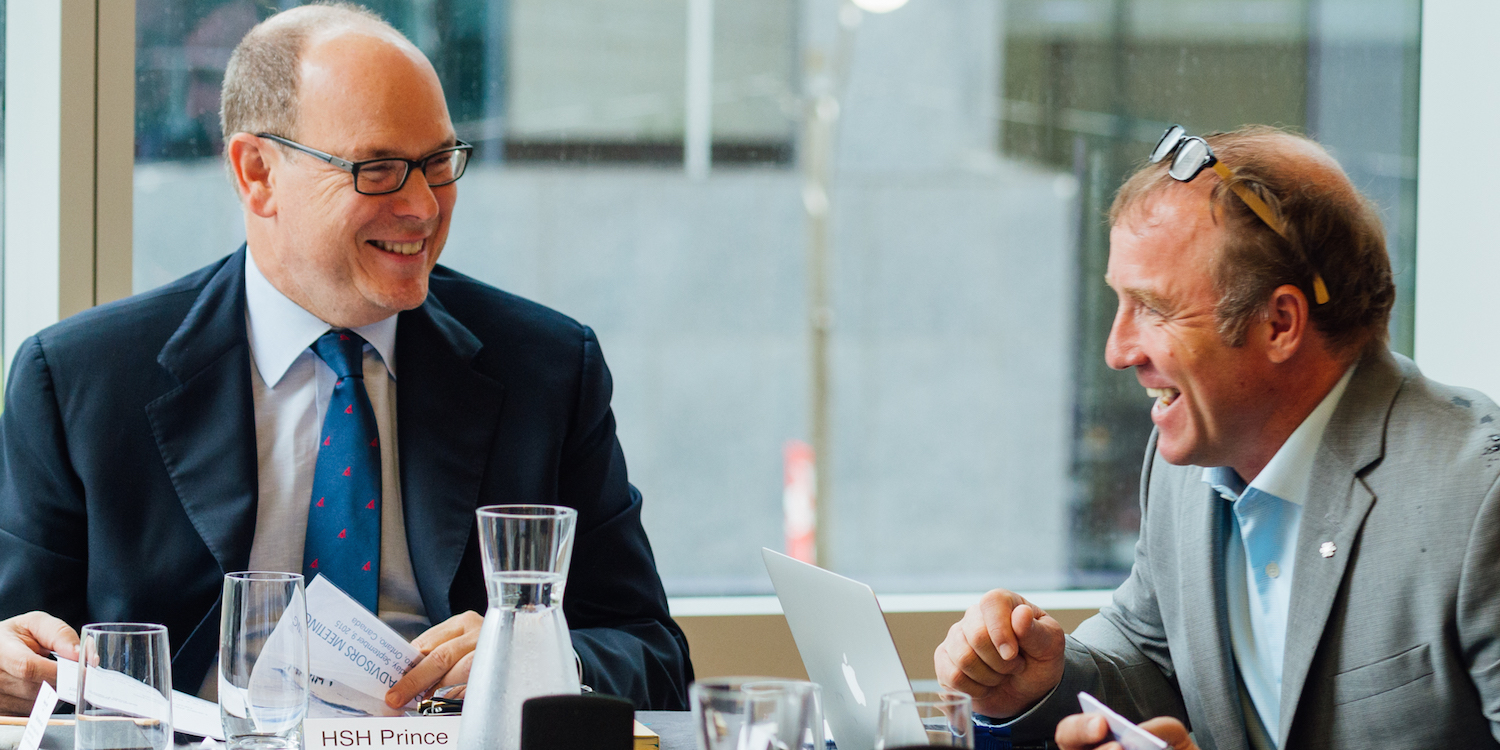Alumni Expedition: Iceland 2023 Recap
The following blog was written during the Alumni Expedition to Iceland in 2023, by participant Dan Guhl.
For the past seven days, a team that started off as strangers have travelled through the breathtaking landscapes that Iceland has to offer: three Students on Ice (SOI) staff, six youth SOI alumni, three northern-based teachers, one videographer, and a local guide. We immersed ourselves in the beauty of this Nordic Island; forging connections with the land and cultural traditions, and learning about its history as a Nation.
Through this adventure, we caught ourselves drawing parallels to Canada’s North, our own communities, their challenges, and ways of life.
While many of our perspectives and learnings we shared were similar, this write-up represents my own perspective of our journey.
Early on during this SOI expedition to Iceland, SOI team member, Lynda Brown, introduced us to an Inuktitut word and the Inuit concept – “Isuma.” Isuma, in its essence, is the art of delving into deep reflection and contemplation. Lynda explained that this introspective practice could take on various forms: from written word to sharing circles, to more creative outlets like art and music. She encouraged each of us to incorporate Isuma into our expedition experience, urging us to understand our individual aspirations for this journey.

The concept of Isuma intrigued me as I pondered its significance before embarking on this adventure. Never had I taken the time in this way before a trip to mindfully reflect on my goals. Looking back over the last seven days of expedition, I understand the benefits this had on my overall experience and how it played an integral part in each of our adventures.
Despite our first full day in Iceland being fueled by caffeine and battling jetlag, I found myself remarkably present in the moment. It was a day when the essence of Isuma became tangible, helping me appreciate the beginning of this journey and all it had to offer. Unloading off the plane, in the capital Reykjavik, we were met with a blast of cold Icelandic air, collected our belongings, and said a little “thank you” under our breath as all our luggage arrived unscathed.

After filling our bellies and wiping the sleep from our eyes, we went to a museum in Reykjavik. It was there that I nearly ran head-on into my aunt and uncle from my hometown Whitehorse, Yukon. Neither of us knew the other was travelling to Iceland at that time, so to run into each other in the same town, the same location, and at the same time, 5,000km from home was serendipitous, to say the least. It really reminded me that the world we’ve created has become so small. Countries are a flight away, family and friends just a click of the button, or in my case ready to be bumped into.
The next day, after starting with an early morning breakfast at our hotel we packed our gear and truly began our Icelandic expedition. This first day was met with excitement as we headed from Skjól in a “Super Jeep” – yes what you’re picturing is pretty much accurate – to the Langjökull Glacier. Translated in English as the “Long Glacier” we arrived to see rows of Skidoos awaiting us. As our guide asked “Who here has ridden a snowmobile” to the group of 25 participants, nearly every hand that went up was from our group of northerners. We started sharing our lived experiences about memories of using snowmobiles for our everyday lives; some of us to hunt, others for travel to and from our cabins, it was something that connected us as a group.

We embarked out onto the ice with the sun trying to break through the clouds. Many of us laughed and sped past each other weaving our way over the glacial landscape. Langjökull is Iceland’s second largest glacier, and it was only halfway through the tour that our guide shared that the glacier sits on many volcanoes.
I kept getting drawn back to our tundra back home in the Yukon and caught myself searching for caribou over the vast landscape. I only learned later on from our guide Lilja (Lil-ee-ah), that Iceland is home to only seven mammals: the Arctic Fox, Mink, very few reindeer, two types of mice, and two types of rats. Yes, there are so few mammals here that they count the species of mice and rats as separate mammals.
Day four was met with much anticipation, the moment that social media selfies are made of: Icelandic waterfalls and a hike on a glacier.
Our cohort visited two waterfalls that day, the Seljalandsfoss and Skógafoss. Unique in their own ways, Seljalandsfoss cascades down over 60 meters and has a walking path that leads behind the waterfall. Fortunately, our waterproof ponchos did their job as we made our way around the back. It was there that youth alumni Danica Taylor did what may very well have been the first one-foot-high kick behind the waterfall. Lynda Brown and educator Sarah Angiyou followed suit with throat singing to tie it all together.

Skógafoss Waterfall is known for its sheer power, while it’s roughly the same height as Seljalandsfoss, it’s about 25 meters wide. The sheer volume of the water often times creates double rainbows for visitors to admire. The cascading water demonstrated the raw, untamed beauty of Iceland, a stark reminder of the forces that have shaped the country. In the same way that northern Canada’s majestic remote landscapes carry a similar grandeur, highlighting the immense challenges and responsibilities that come with protecting such environments.
After getting our fill of waterfalls for the day, we proceeded to Sólheimajökull Glacier. Literally translated to, Home of the Sun Glacier. It was here that we got a safety briefing from our Irish guide Brenna and donned our crampons, helmets, and ice picks. Being from the Yukon I couldn’t help myself as I sang “YVONNE OF THE YUKON!” as I paraded around with my ice pick in hand ready to mine some gold. We hiked to the glacier and SOI staff Lynda and Kira, who had led the 2022 SOI Iceland expedition, stopped in their tracks when they saw the glacier. Their jaws dropped and they shared with the group where the glacier had been only a year before. The glacier had receded in the short time and sat well back from its resting place in 2022. It reminded me that sometimes you need to live an experience to truly absorb a moment. Reading about climate change or melting glaciers in textbooks and online is not a replacement for seeing it firsthand.
As we climbed onto the glacier, we were met with black ash covering the ice. I use the word ash fairly lightly as this volcanic ash was the consistency of coarse sand. Just like many things in nature, the ash plays a vital role in Iceland’s topography. Lilja shared with us that less than 10 cm of ash created the most beautiful fertilizer, any more and it would suffocate the earth. In this case, the ash protected the ice underneath from the warmer skies and prolonged the glacier’s presence.

During this day, we saw just how fierce the Icelandic weather can be, our raincoats and ponchos held off the worst of it, but the cold soaked through to our core and we were happy to climb back onto a warm bus to dry ourselves off. Lilja then took us to the sleepy town of Vik.
After checking into our hotel, we dined at the hotel restaurant, shared stories of our day, and headed to sleep ready for another adventure.
The next day was personally my favourite day for many reasons. Firstly, Iceland decided to bless us with bluebird skies and t-shirt weather. We started our adventure off with a Super Jeep ride from Vik to an Ice Cave located at the base of the Katla Volcano. Our tour guide, who I initially assumed was another giant Viking like many before him, turned out to be a very friendly Italian named Ricardo. We trekked over many glacial creeks to a beautifully naturally sculpted tunnel that was roughly 20 meters in diameter. Ricardo nonchalantly shared that this tunnel would not be here in a couple of months as it melted. However, he told us not to worry as the glacier was ever-changing, what was here today would not be here tomorrow. The waters change course, sections melt, new caves and tunnels spring up, it’s all part of the natural process… but now also sped up due to climate change.
 We continued deeper into our hike and came to the opening of a tunnel no more than two meters in height. As we ventured into the opening we were met with blues and greens in the ice that give northern lakes and rivers a run for their money. As Lynda and Sarah blessed us with more throat singing, the sounds echoed off the walls deeper through the tunnel and mixed with the sounds of glacial waters.
We continued deeper into our hike and came to the opening of a tunnel no more than two meters in height. As we ventured into the opening we were met with blues and greens in the ice that give northern lakes and rivers a run for their money. As Lynda and Sarah blessed us with more throat singing, the sounds echoed off the walls deeper through the tunnel and mixed with the sounds of glacial waters.
We headed back into Vik and took off in our van with Lilja to Reynisfjara, a volcanic black sand beach. Lilja shared with us the dangers of this location. Sneaker waves, as they are called, are very common on this beach. These waves have swept tourists off their feet to their deaths. You could hear the concern in Lilja’s voice as she emphasized safety, to stay well away from the waves and never turn our back to the water. Reynisfjara was truly a force, the waves had carved down the walls into almost flat cliffs jutting from the black volcanic beach. Basalt columns arose creating what I could only imagine as the perfect Viking throne. This view was totally unique and breathtaking.

The 13 of us all got back onto the bus, doing more than one headcount to make sure no sneaker waves got the best of us and headed off to our next destination, the geothermal park, Hveragerði.
Our noses met Hveragerði before our eyes did. The rich smell of sulphur permeated the bus’s vents as we neared the geothermal park. Iceland is well known for its natural hot springs and geothermal waters. These waters are used for many purposes: hot water for showers, power generation for much of the country, and as we learned at Hveragerði, baking bread and boiling eggs. That’s right, after a tour through the park the guide opened up what looked to be a one-meter-wide pipe buried in the earth and pulled out an ice cream bucket that contained a loaf of bread he had been baking since last night. The expedition sat in a greenhouse kept warm by the geothermal waters and feasted on the fresh bread and eggs.
Exploring the Katla Ice Cave, strolling along Reynisfjara Black Sand Beach, and witnessing the geothermal wonders of Hveragerði all in the same day, really revealed Iceland’s geologic diversity.

Before the trip began, SOI gave each youth delegate a care package, among the items was an SOI t-shirt with the SOI motto inscribed on the inside – Flexibility is Key. That phrase came into play on our sixth day as Iceland’s fierce weather patterns changed to rain and winds. We had originally planned to go to the Vatnshellir Cave, Kirkufell Mountain (a shooting location for Game of Thrones), and other adventures but the weather kept us from venturing too far. Instead, the SOI staff pulled a quick audible and we were able to visit another waterfall then headed to Garbrok Crater. Three of us, James, Danica, and myself raced up the countless steps to the top of the crater and looked over the vast landscape below. The volcanic eruption that created these three craters occurred over 3,400 years ago yet the slow growth vegetation made it look like it could have happened last year. After tiring our legs on the many well-designed Icelandic steps we headed off to rest our bodies in a Nordic hot spring.
We were supposed to stay another night in Varmaland, but the weather and travel advisories predicted extremely strong winds for the next day. If you’ve ever driven a Sprinter van full of Canadians hauling a trailer full of luggage, you know that travelling in strong winds is frowned upon. Lilja recommended we embrace the motto and get closer to Reykjavik while we still had the weather in our favour.

We took off to Reykjavik and felt the strength of the Icelandic winds as we made the two-hour journey. Outside Reykjavik, we split into two groups due to changes in our accommodations and each group enjoyed a smaller cohort and joined either team Lynda or team Cecile.
Our final day of expedition was a needed slower day. With so many kilometres travelled, and sites seen, we were ready for an easier day. We headed off to the Perlan Museum. The museum is an incredibly interactive location that highlights many of the beautiful sites we got to experience in person. This dome-shaped facility that sits on top of a hill in Reykjavik is home to volcano, ice cave, glacier, and aurora exhibits. It also boasts an ice cream parlour on the top floor that has a 360-degree view of the town!
We split up and wandered the multi-story facility, taking stops as we saw fit at exhibits that piqued our interest. Many of us ended up in the Áróra room, which was a massive screen on the roof of the exhibit. We enjoyed a 20-minute video all about the Aurora Borealis and its cultural importance in many different lands.

Our journey through the breathtaking landscapes of Iceland was not only a visual spectacle but a profound reminder of the interconnectedness of our world. The credit for making this expedition truly remarkable goes to our extraordinary local guide, Lilja. Lilja’s captivating stories left a mark on our adventure. Her tales, ranging from “hidden people” in the boulders to the intricacies of Icelandic genealogy, were so compelling that they could fill a novel on their own.
What resonated most deeply, however, was the common thread that tied Lilja’s narratives to the cultural pride we observed in the Canadian northerners on our expedition. This experience underscored the fact that, despite the 5,000 kilometres that separated us from home, we share more similarities than we might have ever imagined.
Our shared cultural bonds were present in our love for traditional foods, from Iceland’s fermented shark to northern Canada’s Muktuk. We discovered common ground in the passing down of generational knowledge and oral traditions, such as the significance of the northern lights. We recognized our shared challenges with Iceland, from environmental hardships to issues related to food security, medical transportation, and accessibility.

But it wasn’t just hardships that we shared; it was also the profound pride we held for our communities, our shared successes, and the deep-rooted sense of northern pride. Being from the North is more than a geographic location; it’s a way of life etched into our DNA, culture, and a profound respect for our homes. It’s a commitment to safeguarding the fragility of the North and ensuring that it doesn’t go unnoticed.
As I reflect on this expedition, I’m certain that the bonds we forged over the past seven days will continue to shape our personal and professional lives. This journey has not only enriched our understanding of the world but has also reinforced the significance of our shared human experience, no matter where we call home.
Next stop – Arctic Circle Assembly!





